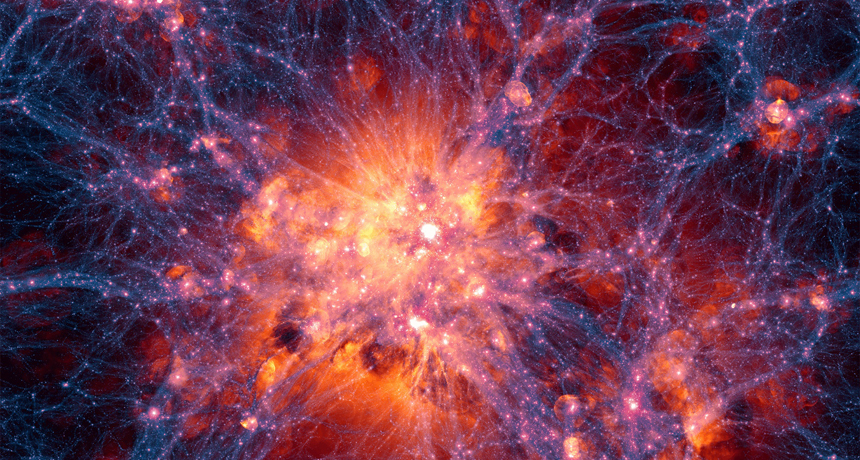Universe re-created in computer simulation
Most detailed model of cosmos reproduces distribution of galaxies

VIRTUAL UNIVERSE In a snapshot from the Illustris computer simulation of the universe, galaxies (pink) cluster along filaments of dark matter (blue). Shown is the most massive cluster in the simulation, in a volume of space roughly 70 million light-years across horizontally. Gas bubbles (orange) rapidly burst from the centers of galaxies, where supermassive black holes drive intergalactic winds that stir up gas for hundreds of thousands of light-years.
Illustris Collaboration